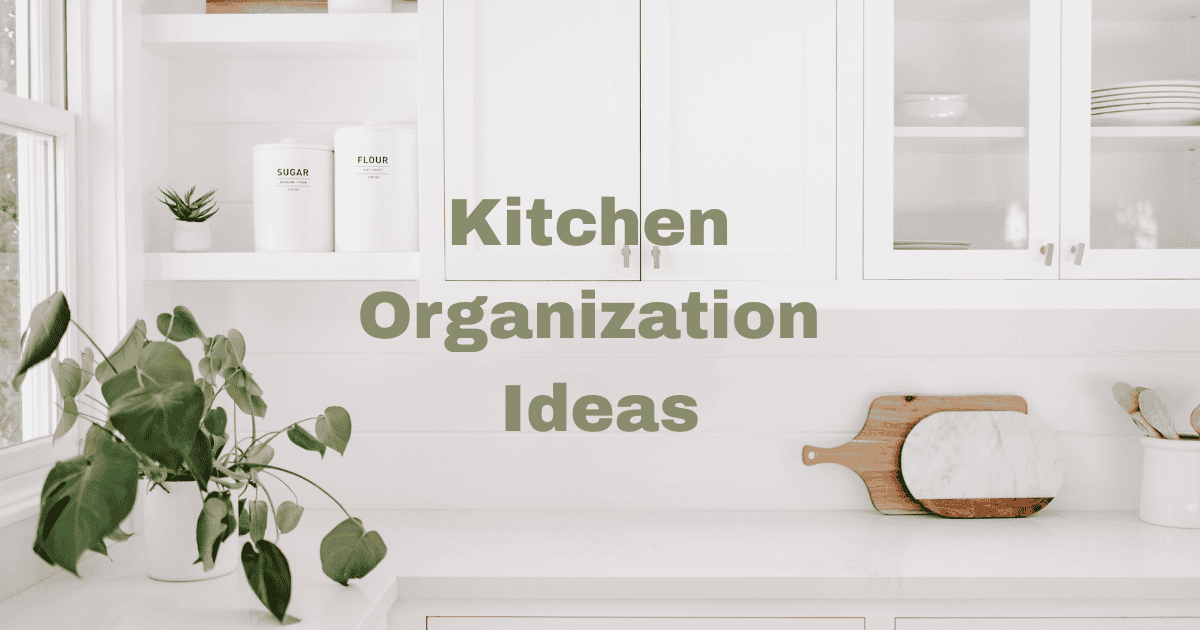A well-organized kitchen isn’t just about aesthetics—it’s the secret to faster meal prep, easier cleaning, and less food waste. Whether your kitchen is large or small, rented or owned, these practical strategies will help you maximize every cabinet, shelf, and counter for a space that truly works for you.
Key Takeaways
- Declutter first, then organize by zones and frequency of use.
- Use vertical space, containers, and dividers to double your storage.
- Keep countertops clear by grouping, containing, and stashing less-used items.
- For a complete home organization plan, visit the Complete Guide to Home Organization and Storage Solutions for Every Room and Budget.
Why This Guide Is Different
This guide gives you actionable, step-by-step strategies for every area of your kitchen, with renter-friendly, budget-conscious solutions and real-world examples. You’ll also find advice for common trouble spots like deep drawers, limited cabinets, and shared spaces.
Start with a Clean Slate: Declutter and Assess
Before you organize, take everything out of your pantry, cabinets, and drawers. Toss expired food, donate gadgets you never use, and group similar items together. This step is crucial for seeing what you have and deciding what deserves prime kitchen real estate.
If you need help getting started, see how to declutter your home room by room: complete beginner’s guide.
Pantry Organization: Create Zones and Use Clear Containers
Plan Your Pantry “Zones”:
Group foods by category—breakfast, baking, snacks, canned goods, grains, etc. Assign each group a shelf, bin, or section. Place most-used items at eye level and rarely used items up high or down low.
Use Clear Containers:
Store dry goods like flour, pasta, and rice in clear, airtight containers. This prevents spills, keeps food fresh, and lets you see what you have at a glance.
Label Everything:
Simple labels help everyone in the household find what they need and put things back where they belong.
Maximize Space:
- Use stackable bins for snacks or packets.
- Try a lazy Susan for oils, sauces, or canned goods in deep corners.
- Add shelf risers to double usable space on each shelf.
Cabinet Storage: Make Every Inch Count
Drawer Organizers and Dividers:
Use adjustable dividers for utensils, cutlery, and kitchen gadgets. Group items by use—baking tools in one drawer, prep tools in another. For more ideas, see Drawer Organizers and Dividers: Complete Guide to Options.
Vertical Solutions:
- Install tray dividers or use magazine holders to store cutting boards, baking sheets, and trays upright.
- Hang hooks or racks on cabinet doors for measuring spoons, oven mitts, or pot lids.
Roll-Out Trays and Pull-Out Bins:
Roll-out trays in lower cabinets make it easy to access pots, pans, and small appliances without digging. Use pull-out bins for cleaning supplies or pantry overflow.
Zone Your Cabinets:
Store items where you use them most. Pots and pans should be near the stove, cutting boards by the prep area, and plates and glasses close to the dishwasher or sink for easy unloading.
Deep Drawer Solutions:
- Use deep bins or baskets to separate large items like mixing bowls and food storage containers.
- Stack pots, pans, or lids vertically using adjustable dividers for easy access.
Countertop Organization: Clear, Contain, and Group
Keep Only Daily Essentials Out:
Limit countertop items to what you use every day—like a coffee maker or toaster. Store less-used appliances in cabinets or pantry zones.
Group Like Items:
Use trays or baskets to corral oils, spices, or utensils. This keeps counters tidy and makes cleaning easier.
Maximize Vertical Space:
- Add a wall-mounted spice rack or magnetic knife strip.
- Use a tiered fruit basket or shelf to store produce off the counter.
Hide Clutter:
If you need to keep items on the counter, choose attractive containers or lidded baskets to hide mess and maintain a streamlined look.
How Do I Organize a Small Kitchen with Limited Cabinet Space?
- Use over-the-door organizers inside pantry or cabinet doors for spices, wraps, or snacks.
- Hang pots, pans, or utensils from a wall-mounted rack or pegboard.
- Store overflow pantry items in a labeled bin on top of the fridge or in an unused corner.
- Add a rolling cart for extra prep space and movable storage.
- For more creative ideas, check out Small Space Organization: Maximize Storage in Apartments and Tiny Homes.
Common Mistakes to Avoid
- Organizing before decluttering: Always purge first to avoid “organizing clutter.”
- Ignoring vertical space: Walls, cabinet doors, and even the sides of cabinets are valuable real estate.
- Storing items far from where you use them: Keep prep tools near the prep area, and plates near the dishwasher or sink.
- Letting counters fill up: Resist the urge to let mail, gadgets, or groceries pile up.
Real-World Example: A Kitchen Transformation
When Sarah moved into her first apartment, her tiny kitchen felt chaotic. She started by decluttering, then used clear bins for snacks and baking supplies in her pantry. She installed a tension rod under the sink for spray bottles, added hooks for utensils, and used a rolling cart as a mobile prep station. By zoning her cabinets and keeping only essentials on the counter, she cut her meal prep time in half and found it much easier to keep the kitchen clean.
Make Your Systems Last
The best kitchen organization systems are easy to maintain. Label shelves and bins, do a quick reset each week, and adjust zones as your cooking habits change. For strategies that stand the test of time, visit How to Create Organization Systems That Actually Last.
Next Steps
Kitchen organization is a process, not a one-time event. Start with decluttering, create zones, and use vertical and hidden storage to maximize every inch. For more inspiration and a full plan for every room, visit the Complete Guide to Home Organization and Storage Solutions for Every Room and Budget.
With these ideas, you can transform your kitchen into a space that’s functional, beautiful, and a joy to use—no matter its size or layout.









